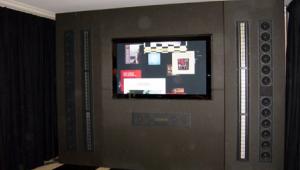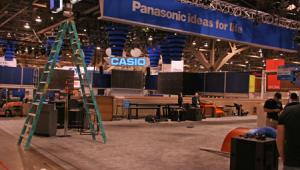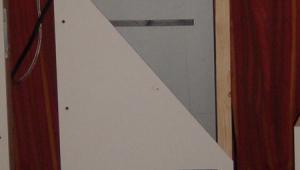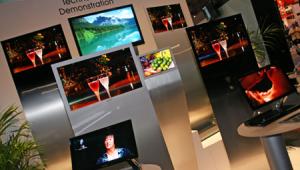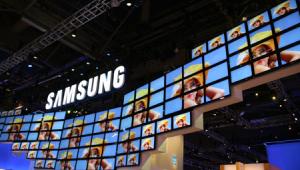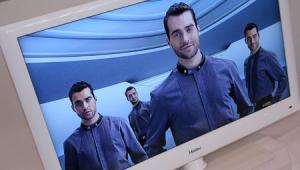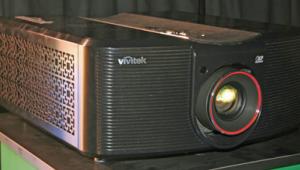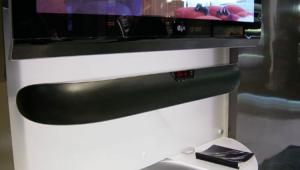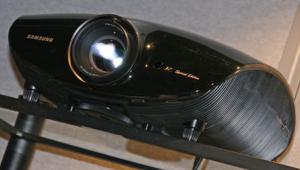Looking Back on CES '09

When I first started going to CES in the early 80's, it was all 2-channel audio and there were still TV consoles (i.e. CRT's built into wooden cabinets). However, rear projection TVs were being introduced for the high-end and VCRs were the next big thing.
The 90's were all about Home Theater, the integration of audio and video to duplicate the cinematic experience. The focus on Home Theater didn't change as we moved into the new millennium. Audio continued to get better with more channels of discreet audio, TVs got flatter and flatter, and projectors got less and less expensive with higher resolutions. With the advent of Blu-ray, today's home theater experience can actually rival commercial cinemas.
All the while, computers and the Internet have become more integral to our daily lives. The integration of the computer into our home theater experience via networking is not new but it's very clear after this year's CES, it IS the next big thing.
Home Theater is still important but the products that make up the best home theaters are only being refined. The new innovations are all about networking-integrating all your media, including Internet browsing, into a single entity. We have jumped beyond mere home theater. Now, whatever media experience you desire – it is at your fingertips from one central location.
Networking and wireless transmission was everywhere this year. Next generation AVRs and TVs have the ability to access music, movies, and photos directly from our computer, a flash drive, or larger storage units. Better yet, the newest interfaces allow you to find your media from your TV/home theater, even when the computer and storage devices are in other rooms.
When you purchase your next TV from Panasonic, Samsung, and many others, you will have the ability to browse your favorite websites such as YouTube, Hulu.com, CBS, NBC, CNN, etc. without leaving the comfort of your living room sofa. It's not just about your own personal experience either. Share the latest viral video with your friends without huddling around a small computer screen. Just browse those sites directly from the TV menu. To make it foolproof easy, the menu includes icons you can click on, so it's not necessary to type in a URL.
The integration of Netflix streaming was almost ubiquitous. Earlier this year, I reviewed the $99 Roku box for our sister pub, Home Theater. Then about a month ago, I reviewed a new LG Blu-ray Player with Netflix streaming here in Ultimate AV. Obviously, the folks at Netflix recognize that hard media is falling behind in popularity. They have been diligently developing partnerships throughout the industry because in 2009 you can expect to see Netflix streaming capabilities in lots of TVs and Blu-ray players. Blockbuster recently announced the development of similar partnerships, but they will have to work fast as Netflix has gained the upper hand almost overnight.
One could get disheartened and equate Internet integration of low-res websites and streaming media into the home theater landscape with the iPod and the acceptance of lowfi MP3s. However, there will always be the low-end of the spectrum. If you want high-end solutions, they will be there, too. Moreover, as people start accessing websites on high-resolution TVs, you can bet those sites will start improving quality to meet the demand. For instance, YouTube is making it possible for higher resolution uploads, and in the world of camcorders, there were several new products with up to 1080p resolution specifically designed for direct upload to YouTube and other sites.
Many companies insist that wired networking is still the most stable and reliable, and I won't dispute that claim. However, there were a tremendous amount of wireless solutions at the show, too. LG, Panasonic, and Toshiba demonstrated wireless televisions. The TV itself requires power but there are no additional cables to the television itself. A receiver is provided, that transmits up to 1080p signals from all the connected components to the TV, wirelessly. This makes it possible for the TV to be on the wall without unsightly wires running to it and no need for in-wall cabling to acheive a clean installation.
I'm not sure if 3-D gaming is ready for primetime, but you wouldn't know it from the number of demonstrations throughout the show. Whether the event horizon is one year or five, it just exemplifies how the home theater experience is branching out into other forms of entertainment and will continue to do so in the coming years.
The show itself has become rather unwieldy, covering the entire Las Vegas Convention Center, the Sands Convention Center, and several hotels. In fact, many of the product categories are outside the scope of Ultimate AV, so you don't even realize just how big CES really is from our show report. As an attendee, you are on sensory overload during the show and for several days afterward. However, when you get some perspective, you realize that CES has always done one thing very well– and that's to provide a glimpse into the future of home entertainment.
The reason I still like to attend CES, despite the sore feet and aching back, is best expressed by Sony's Jules Verne-ian like motto at this year's show – Believe that anything you can imagine, you can make real. It's still a blast to see how technology continues to develop and capture our imaginations.

